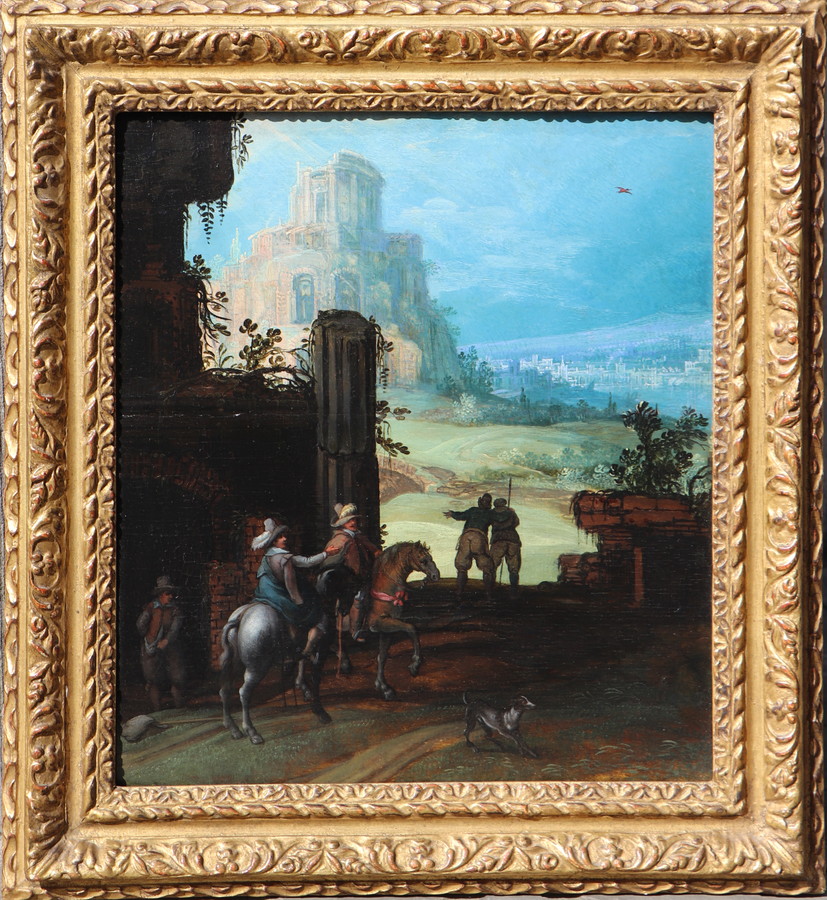Travellers in Tivoli admiring the ruins of the Round Temple of Vesta, also known as the Temple of the Tiburtine Sibyl
Oil on panel : 41,0 X 36,5 cm
Unsigned
Frame : 53,8 X 49,4 cm
Our painting is recorded at the RKD, The Hague under number 0000185746.
I would like to thank Prof. Dr. Jan De Maere for confirming the attribution.
"All paintings are fully documented with texts and photographs of comparative items. All this information is removed from our website once the painting is sold".
SOLD

